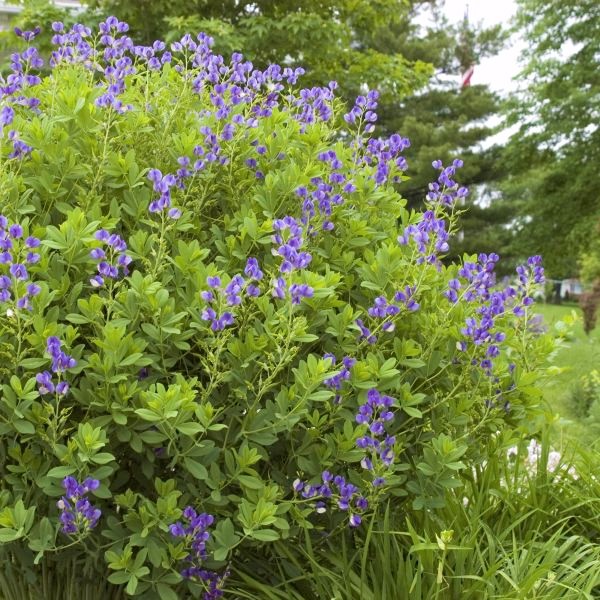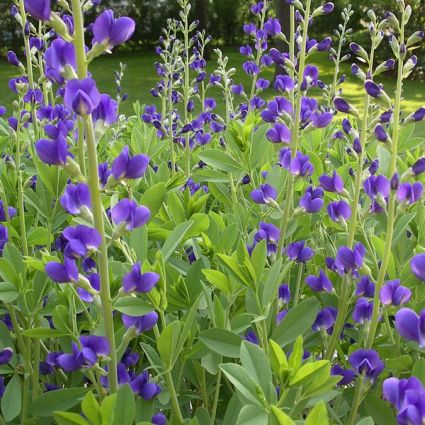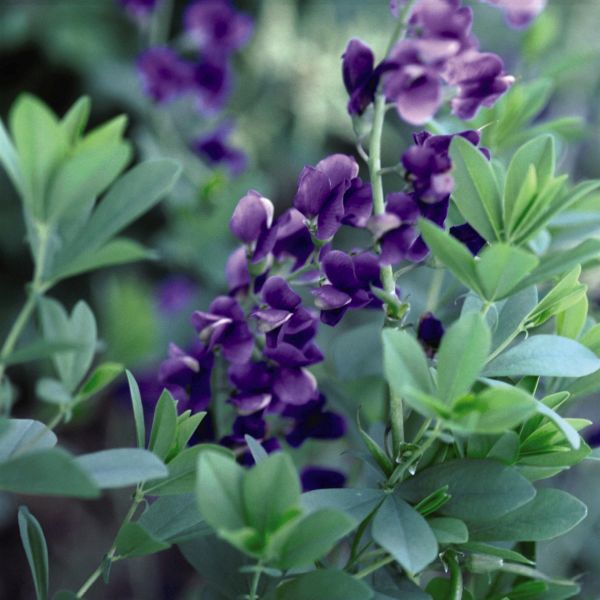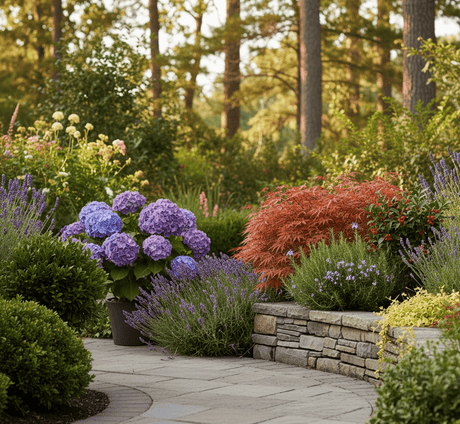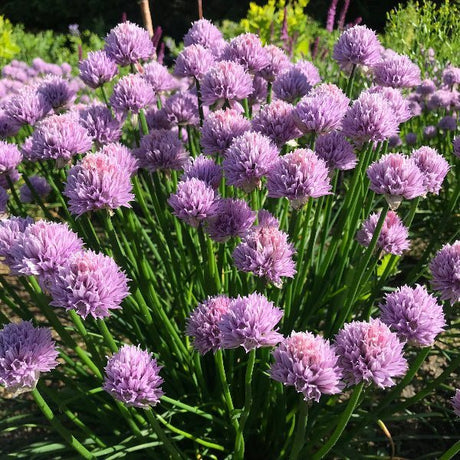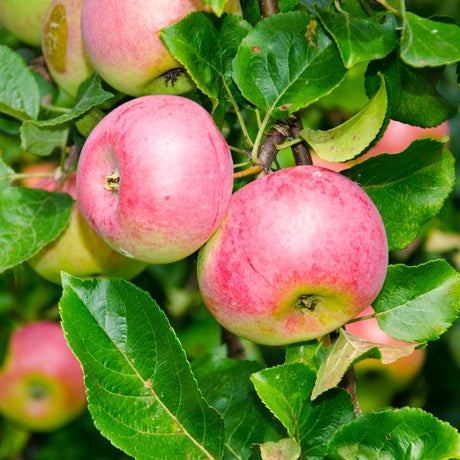Blue False Indigo
Baptisia australis
- Stay Protected with Plant Sentry ™
Blue False Indigo - #1 Container is backordered and will ship as soon as it is back in stock.
Plant Sentry™
Plant Sentry™

Plant Sentry™ Protected
Your order is protected by our compliance system that:
- Prevents restricted plants from shipping to your state
- Ensures plants meet your state's agricultural requirements
- Protects gardens from invasive pests and diseases
Delivery and Shipping
Delivery and Shipping
Delivery and Shipping
Fast, Safe Plant Delivery
Ships in 3-4 business days • Tracking provided • Weather protected
| Under $50 | $9.99 |
| $50 - $99.99 | $14.99 |
| $100 - $149.99 | $16.99 |
| $150 - $198.99 | $24.99 |
| $199+ | FREE |
✓ Zone-specific timing • ✓ Professional packaging • ✓ Health guarantee
Understanding Plant Options
Nature Hills offers plants in two main formats:
- Container Plants: Grown in pots with soil, sized by container volume and plant age
- Bare Root Plants: Dormant plants without soil, sized by height measurements
Container Plant Sizes
Container sizes indicate plant age and growing capacity rather than liquid volume equivalents. Our containers follow industry-standard nursery "trade gallon" specifications, which differ from standard liquid gallon measurements.
Young Plants (6 months to 18 months old)
| Container Size | Actual Volume | Metric Equivalent |
|---|---|---|
| 2" x 2" x 3" | 0.18 - 0.21 dry quarts | 0.20 - 0.23 dry liters |
| 4" Container | 0.31 - 0.87 dry quarts | 0.35 - 0.96 dry liters |
| 4.5" Container | 0.65 dry quarts | 0.72 dry liters |
| 6" Container | 1.4 dry quarts | 1.59 dry liters |
| 1 Quart | 1 dry quart | 1.1 dry liters |
| 5.5" Container | 1.89 dry quarts | 2.08 dry liters |
Established Plants (18 months to 2.5 years old)
| Container Size | Actual Volume | Metric Equivalent |
|---|---|---|
| 2 Quart | 2 dry quarts | 2.2 dry liters |
| #1 Container | 2.26 - 3.73 dry quarts | 2.49 - 4.11 dry liters |
| 5" x 5" x 12" | 3.5 - 4.3 dry quarts | 3.85 - 4.74 dry liters |
Mature Plants (2-4 years old)
| Container Size | Actual Volume | Metric Equivalent |
|---|---|---|
| #2 Container | 1.19 - 1.76 dry gallons | 5.24 - 7.75 dry liters |
| #3 Container | 2.15 - 2.76 dry gallons | 8.14 - 12.16 dry liters |
Large Plants (3-5 years old)
| Container Size | Actual Volume | Metric Equivalent |
|---|---|---|
| #5 Container | 2.92 - 4.62 dry gallons | 12.86 - 20.35 dry liters |
| #6 Container | 5.25 - 6.01 dry gallons | 23.12 - 26.42 dry liters |
| #7 Container | 5.98 - 6.53 dry gallons | 26.34 - 28.76 dry liters |
Bare Root Plants
Bare root plants are sold by height from the root system to the top of the plant. Plants may exceed minimum height requirements.
Common Sizes:
- Trees: 1 foot, 2 feet, 3 feet, 4 feet, 5 feet, 6 feet
- Shrubs & Perennials: 1 foot, 18 inches, 2 feet
Important Notes
Container Volume Specifications
- Trade Gallon Standard: Our containers follow industry-standard "trade gallon" specifications established by the American National Standards Institute (ANSI Z60.1) for nursery stock
- Volume Variations: Actual soil volume may vary due to plant root systems and growing medium settlement
- Age Indicators: Container size primarily indicates plant age and maturity rather than liquid volume equivalents
Growing Conditions
- Plant size can vary based on variety and growing conditions
- Container size helps indicate plant maturity and establishment level
- Larger containers generally mean more established root systems and faster landscape establishment
Seasonal Availability
- Bare root plants are available seasonally when dormant
- Container plants are available throughout the growing season
- Specific varieties may have limited availability in certain sizes
Questions?
For questions about specific plant sizes or availability, please contact our plant experts who can help you choose the right size for your landscape needs.
Plant Highlights
Blue False Indigo highlights at a glance!
-
Plant Class
-
Botanical Name
-
Brand
-
Growing Zones3, 4, 5, 6, 7, 8, 9
-
Growth RateModerate
-
Mature Height
-
Mature Width
-
Leaf Color
-
Flower Color
-
NativeYes
-
Pollinator FriendlyYes
-
Pollinator Required
-
Bloom PeriodLate Spring, Early Summer, Late Summer
-
Does Not Ship To
Characteristics
Where To Plant
When To Prune
- Late Fall
Water & Moisture Needs
- Moderate
Sunlight Needs
Soil Needs
- Well Drained
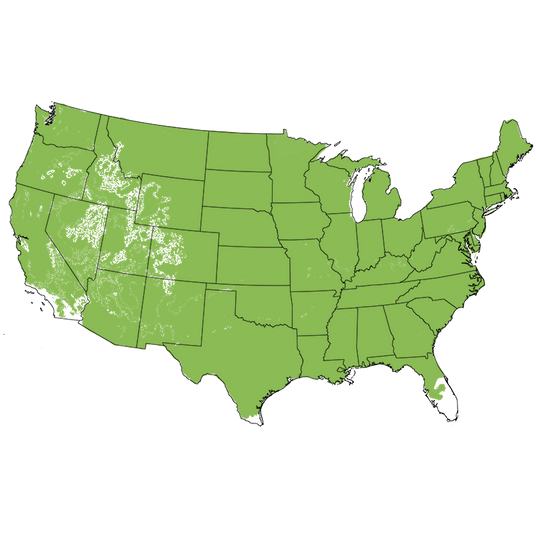
Growing Zones 3-9
Brilliant Blue Native Wildflower
Blue False Indigo (Baptisia australis) is a stunning American prairie restoration native perennial bursting with true indigo-blue, pea-like blooms that open in early spring. Its flower spikes attract clouds of fluttering butterflies and pollinators while providing an unforgettable color display.
This bushy perennial features deeply divided blue-green leaves on a rounded 3–4 foot tall form. Long-lived and hardy through USDA zones 3–9, it dies back each winter and returns stronger every spring. After the flowers fade, the plant develops intriguing seed pods that rattle in the breeze and add fantastic fall and winter interest to the landscape.
Native to the American Midwest, this plant has been loved for generations. Its tough, adaptable nature and nitrogen-fixing roots improve soil health, while its classic blue blooms have made it a favorite in town squares, prairies, and pollinator gardens across the country.
>>Jump to Planting & Care Instructions
Key Features
- Gorgeous indigo-blue pea-like floral spikes
- Tall, bushy form with fine-textured blue-green foliage
- Long-lived, cold-hardy native perennial
- Lovely cut flowers and fall seed pods
- Attracts butterflies and beneficial insects
- Great for soil improvement and firewise landscaping
- Works beautifully in specimens, backdrops, accents, and tricky sites
Landscaping Uses
A version of the hardy native Blue Wild Indigo, this resilient beauty quickly fills bare spots in borders or mixed perennial plantings. Its tall spikes and rare blue hues make it a striking companion among Cottage, Meadow, and Pollinator gardens.
This perennial pairs beautifully with other beneficial insect attractors and native plants, creating a living pollinator buffet each spring. Use Blue False Indigo to anchor garden beds, soften corners, or provide a bold blue backdrop for later-emerging perennials and flowering shrubs.
Ideal for firewise landscapes, xeric gardens, and even hellstrips, it thrives in poor soil and dry conditions once established. Its deep roots fix nitrogen naturally, improving soil structure for future plantings.
Blue False Indigo is also a delight in Sensory and Children's Gardens. The rattling seed pods have entertained kids for generations, adding playful sound and texture to the fall and winter landscape.
Landscaping Ideas:
- Cottage, prairie, and meadow gardens
- Pollinator or native restoration sites
- Soil improvement and slope stabilization
- Firewise and xeric landscaping
- Specimens, groupings, and border anchors
- Sensory gardens and children's play gardens
Care & Maintenance
Hardy in USDA zones 3–9, this herbaceous perennial thrives in full sun or partial shade. It tolerates a wide range of soil types but performs best in well-drained, moderately moist conditions. Avoid planting in wet, heavy soil.
Once established, Blue False Indigo becomes exceptionally drought-tolerant and low-maintenance. Water regularly during its first year and during hot, dry spells. A little afternoon shade helps protect the foliage during extreme heat.
After blooming, a quick deadheading tidy-up keeps the plant neat. In late fall or winter, prune to the ground and apply a 3–4 inch layer of arborist mulch over the crown to protect the root system. Add compost or organic fertilizer in spring if desired.
Don't forget to order your Nature Hills Root Booster for lifelong mycorrhizal support and healthier root growth.
Care Details:
- Planting Time: Spring or fall
- Sun Requirements: Full sun to partial shade
- Soil Requirements: Well-drained, moderately moist soil
- Moisture Needs: Moderate; use the Finger Test to check soil moisture and water regularly during establishment
- Mulch: Maintain a 3–4 inch layer of arborist mulch
- Fertilization: Not required; enrich soil with compost if desired
- Pruning: Deadhead after bloom; cut back in winter
- Division: Every 3–5 years if needed
- Special Perks: Deer-resistant, heat-tolerant, drought-tolerant, and chill-resistant
A True Blue Beauty for Every Garden
Vibrant indigo and soft blue-green foliage make Blue False Indigo a must-have for every sunny garden. Long-lived, resilient, and full of seasonal charm, this native perennial will bring butterflies, texture, and color to your landscape for decades to come.
Order your Blue False Indigo today at NatureHills.com and start enjoying this true blue prairie classic in your garden!
FAQs
Is Blue False Indigo a native plant?
Yes! Baptisia australis is native to North America and thrives naturally across much of the Midwest and eastern United States.
Do deer eat Blue False Indigo?
No, it's naturally deer-resistant thanks to its slightly bitter foliage.
Does Blue False Indigo spread or stay compact?
It grows in a tidy clump about 3–4 feet wide and tall, slowly expanding over time but not invasive.
When should I prune Blue False Indigo?
Prune back to the ground in late fall or winter once the seed pods dry, or in early spring before new growth emerges.
Can I use Blue False Indigo as a cut flower?
Absolutely! The tall blue spikes and blue-green foliage look beautiful in bouquets, and the seed pods add texture to dried arrangements.

